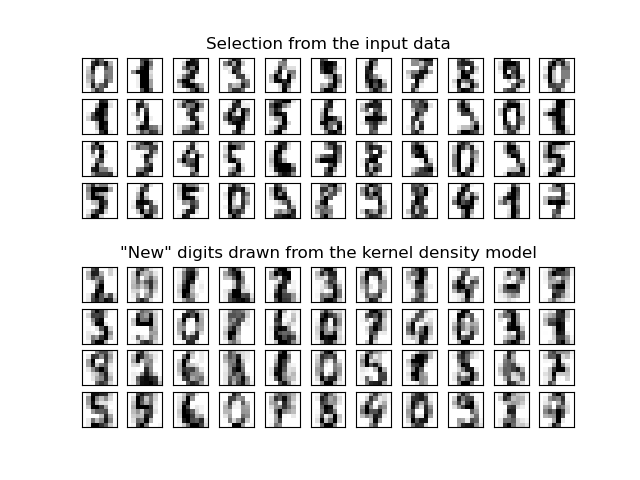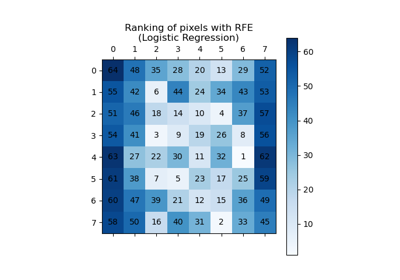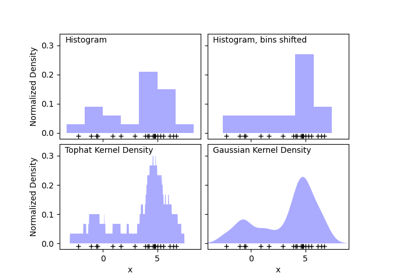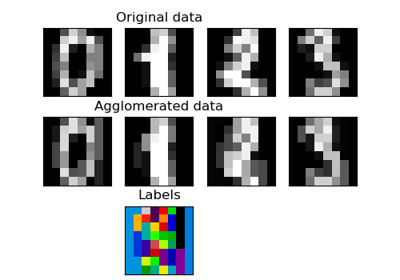注意
转到末尾 下载完整的示例代码,或通过 JupyterLite 或 Binder 在浏览器中运行此示例。
核密度估计#
此示例展示了核密度估计 (KDE) 这种强大的非参数密度估计技术如何用于学习数据集的生成模型。有了这个生成模型,就可以生成新的样本。这些新样本反映了数据的潜在模型。

best bandwidth: 3.79269019073225
# Authors: The scikit-learn developers
# SPDX-License-Identifier: BSD-3-Clause
import matplotlib.pyplot as plt
import numpy as np
from sklearn.datasets import load_digits
from sklearn.decomposition import PCA
from sklearn.model_selection import GridSearchCV
from sklearn.neighbors import KernelDensity
# load the data
digits = load_digits()
# project the 64-dimensional data to a lower dimension
pca = PCA(n_components=15, whiten=False)
data = pca.fit_transform(digits.data)
# use grid search cross-validation to optimize the bandwidth
params = {"bandwidth": np.logspace(-1, 1, 20)}
grid = GridSearchCV(KernelDensity(), params)
grid.fit(data)
print("best bandwidth: {0}".format(grid.best_estimator_.bandwidth))
# use the best estimator to compute the kernel density estimate
kde = grid.best_estimator_
# sample 44 new points from the data
new_data = kde.sample(44, random_state=0)
new_data = pca.inverse_transform(new_data)
# turn data into a 4x11 grid
new_data = new_data.reshape((4, 11, -1))
real_data = digits.data[:44].reshape((4, 11, -1))
# plot real digits and resampled digits
fig, ax = plt.subplots(9, 11, subplot_kw=dict(xticks=[], yticks=[]))
for j in range(11):
ax[4, j].set_visible(False)
for i in range(4):
im = ax[i, j].imshow(
real_data[i, j].reshape((8, 8)), cmap=plt.cm.binary, interpolation="nearest"
)
im.set_clim(0, 16)
im = ax[i + 5, j].imshow(
new_data[i, j].reshape((8, 8)), cmap=plt.cm.binary, interpolation="nearest"
)
im.set_clim(0, 16)
ax[0, 5].set_title("Selection from the input data")
ax[5, 5].set_title('"New" digits drawn from the kernel density model')
plt.show()
脚本总运行时间: (0 分钟 3.712 秒)
相关示例



